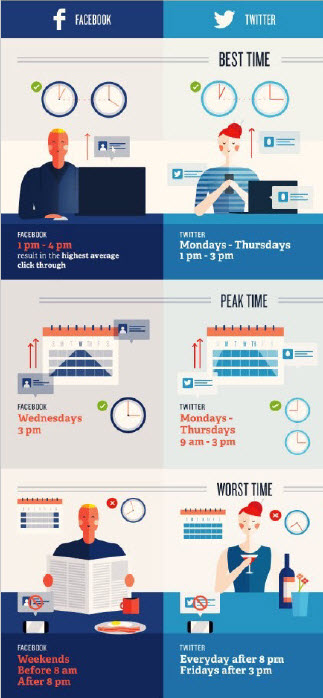Social Media Metrics: The Most Important Analytics To Measure Engagement
Are you using the right social media metrics and analytics tools to monitor, assess and improve your social media performance?
What analytics are you measuring and what should you be measuring in your social media tracking?
Monitoring your social media analytics can make the difference between the success or failure of your social media presence.

Web and Internet concept with social media and social network signs and words on bouncing colorful spheres isolated on white background.
The world of social media has taken off so significantly in recent years that there are now all sorts of different metrics, analytics, and tools you can use to look at the performance of your social media content.
Engagement on social media and engagement with your brand are two separate things. While you think that people are engaging with your brand on social media, they’re still on someone else’s network, with the ability to be distracted by something else – a cat, maybe – at any time.
It’s not your time, it’s theirs.
However, when they move onto one of your properties – your website, principally, you can start to analyze what they’re really doing. And this is where social metrics gets really interesting.
Take, for instance, the difference between Twitter and Facebook visitors once they’ve landed on your site. I’ve frequently found huge differences in subsequent engagement, with many Twitter  visitors leaving after one or two pages at most, and Facebook visitors (on the desktop) staying for at least four pages. Think of how you use Facebook. During the evening hours, many users will scroll through their feeds until they see the last thing they remember on Facebook.
visitors leaving after one or two pages at most, and Facebook visitors (on the desktop) staying for at least four pages. Think of how you use Facebook. During the evening hours, many users will scroll through their feeds until they see the last thing they remember on Facebook.
How likely is your audience to share your content? When your followers and fans feel motivated to spread your message, your engagement can increase exponentially.
You’ll find engagement levels through different metrics in your social media insights. Engagement can be in the form of retweets, forwards to a friend, comments, likes, shares, and inbound links.
The engagement rate for social media is typically defined as the total number of interactions with your content divided by the total number of impressions it receives. While this KPI (A Key Performance Indicator is a measurable value that demonstrates how effectively a company is achieving key business objectives) can help you determine at a high-level if people engage with your social content, it won’t tell you if they do so in ways that are meaningful and profitable for your business. What counts as a meaningful social interaction varies from industry to industry, and even from company to company.
If your social metrics include irrelevant actions, it will be difficult to tell if you’re making the impact you intend. Thus, it’s important to have a narrowly defined engagement rate that only includes interactions relevant to your brand goals.
To develop a custom engagement rate, the first step you need is to define the engagements that matter.
Facebook interactions and engagements take form in:
- Likes
- Comments
- Shares
- Video Views
- Views of Facebook Live
- Link Clicks
Instagram (although owned by Facebook) has its own form of engagement tools:
- Hearts (double tapping)
- Instagram stories
- Commenting
- Inbound messaging
- Regramming
Some of Twitter’s default engagement rate includes all interactions:
- Retweets
- Replies
- Follows
- Likes (hearts)
- Link clicks
- Hashtag clicks
- Profile photo clicks
A general guideline for determining a user’s level of effort is to consider how engaged or interested that user is at the moment they interact. A simple and easy formula is to assign a weight system based on the user’s level of effort. For instance, if a user were to give you a Like on Facebook, heart on Instagram or a Like on Twitter – you would assign a 1 to that action given it is the lowest threshold of engagement you can deliver on those three platforms.
On the other hand, if a user viewed your video or watched a Facebook Live session – you might assign a 3 to that action in that it required more engagement on their part.
Along those lines, if a user SHARED a Facebook post or Retweeted a tweet you might assign a 5 to that action. The viral nature of that engagement will potentially yield you more followers or customers in the end.
In the end, we recommend you harden your social reporting. Make sure the information you are collecting and monitoring is relevant, make it real-world, and not stuck in the isolated environment of the social network itself. Then you’ll get the acknowledgment and the return on investment that you need.
Here at Lucé Media, our team works with small- to medium-sized businesses and individuals who want to benefit from innovative, exciting new approaches to digital engagement. If you need top-notch assistance with your social media branding efforts, contact Lucé Media today!




